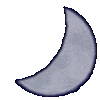The Circle of Light Issue #3 Date: 13/6/2001 In this issue: Slavic Sorcery Animal Magick: Mockingbird and Fox Familiars Crystals by Apasi and Sarah Iolanthe's Body & Soul: Yoga Written in the Stars: Monthly Horoscopes Tzu Wei Pagan Band Review: Butterfly Messiah Reiki: An Introduction Gods and Goddesses of Witchcraft: Pan Frigg Ares Psychic Gifts: Telekinisis Reviews Your Say Submissions  |
Frigg Submitted by Ryan Bennington  Root: Norse Description Mythology Frigg (also spelled Frigga), in Norse mythology, the chief goddess, wife of the principal god Odin. Her name means "wife" or "beloved," and she was the goddess of marriage, associated with love and fertility. One of her sons was the beloved but doomed god Balder. In the heavenly realm of Asgard, Frigg lived in a magnificent palace called Fensal. She sometimes dressed in the plumage of falcons and hawks, and she could also travel in the form of these birds. She had 11 maidservants: Fulla, Hlin, Gna, Lofn, Vjofn, Syn, Gefjon, Snotra, Eir, Var, and Vor, who helped the goddess in her role as goddess of marriage and justice. They are sometimes considered to be various aspects of Frigg herself rather than distinct beings. In both the 'Poetic (or Elder) Edda' and the 'Prose (or Younger) Edda', Frigg is named as Odin's wife and as the mother of the Aesir. As Odin's wife she was the highest of the Asynjur, the female deities in the Norse pantheon. Although Frigg loved Odin, she was known to have had an occasional affair. Odin was not a faithful husband, either; Frigg's rivals included Rind, Gunnlod, and Grid. Frigg was also a seeress who knew the future but never spoke of it, not even to Odin, though he knew she had this power. Frigg is not mentioned at length in the surviving literature. Her most prominent role is in the story of the death of Balder. Legends Frigg is believed to have originated as a much older, widely worshiped Earth Mother goddess, identified as Jorth (also spelled Jörth or Iord), Fjorgyn, or Nerthus. In the 'Prose Edda', Frigg is identified as the daughter of Fjorgyn (also spelled Fiorgvin, Fjorgvin, or Fiorgyn). Frigg is sometimes also confused with the goddess Freya--both are deities of love and fertility. Other goddesses, about whom almost nothing is known, are also identified with Frigg, including some of those named as her servants: Gefjon, Hlin, Saga, and Eir. The Romans associated Frigg with Venus. Ryan Bennington  Email Ryan at: somewhat_damaged@graffiti.net |

